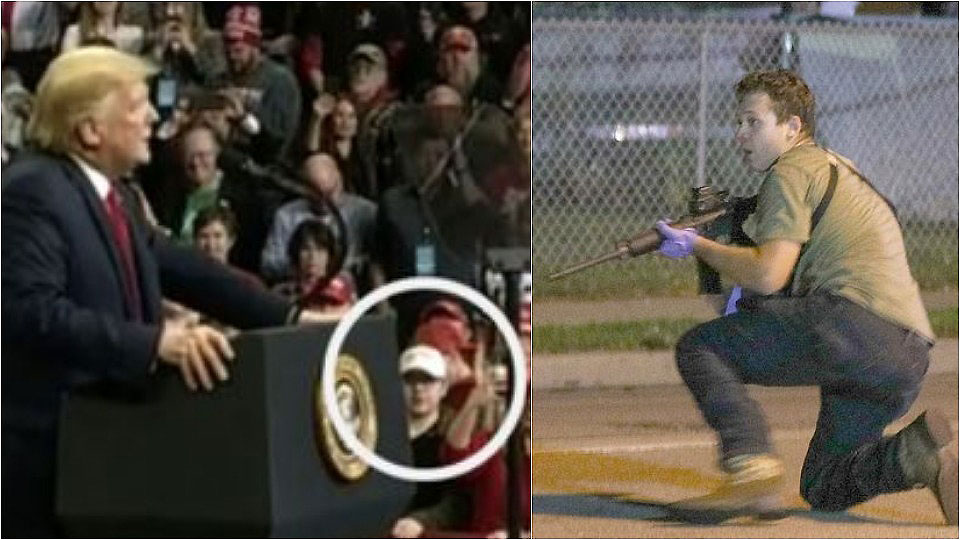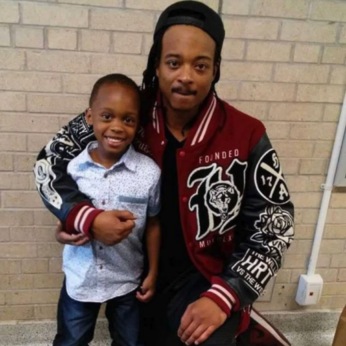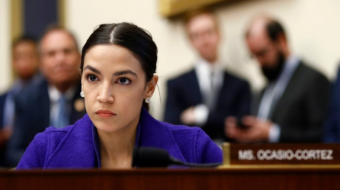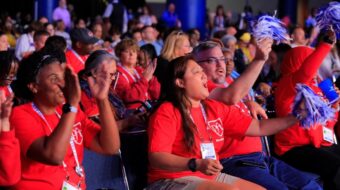
Kyle Rittenhouse, the armed 17-year-old from Illinois who killed two people and wounded another during a protest in Kenosha, Wisconsin, last summer, is finally having his day in court. Rittenhouse, who has become a poster boy for far-right ideals and anti-Black Lives Matter sentiment is facing five felony charges. The outcome of the trial will not only test the ability of vigilante killers to misuse self-defense arguments in their favor but reflect the effects of white supremacy in the United States.

On Aug. 25, 2020, Rittenhouse shot and killed Anthony Huber and Joseph Rosenbaum, and injured Gaige Grosskreutz. Those three men were among crowds that filled the streets of Kenosha protesting the police shooting of Jacob Blake. Blake, a Black man, was shot seven times in the back and side by a Kenosha police officer. This outcry against the use of excessive police force was part of a resurgence of the Black Lives Matter (BLM) movement during the summer of 2020, that called for accountability in a number of assaults on and deaths of Black people.
This uprising was countered in various cities across the country with armed militias claiming to be protectors of property that they alleged BLM protestors (who the right often referred to as “looters”) damaged. Rittenhouse was part of such a militia when he wielded his military-style weapon, that he could not legally carry at his age, on the men.
To understand the symbolism of this trial, one need only to look at the journey to the court itself.
Rittenhouse ended up in Kenosha because he was answering the call of Kevin Mathewson, a one-time city alderman, to defend the city “from the evil thugs.” The “thugs” he was referring to were BLM protestors.
As reported by the New York Times, nearly 4,000 men replied to the Facebook call-to-action Mathewson posted, resulting in the formation of the so-called Kenosha Guard. This makeshift grouping was not the first of its kind and is seemingly part of a rise in clusters of gun-toting vigilante groups flaunting their so-called right-to-bear arms. Usually, this bearing of arms is coupled with intimidation tactics against people they deem as being opposed to their ideals.
To counter protests like BLM, armed groups of extremists have presented themselves as unofficial extensions of law enforcement and posed as vigilante security guards. Many carry around their big rifles under the guise of protecting property only to end up themselves as the initiators of violence.
Throughout the summer of 2020, and leading up to the presidential election, these groups became more pronounced. Their activities have ranged from intervening in protests to organizing kidnapping plots targeting elected officials. The makeup of these groups is usually white men with white supremacist ideas. A recent report by the Department of Homeland Security (DHS) states that white supremacist groups are the single most dangerous domestic extremist threat to the nation.
Rittenhouse was not some lone wolf looking for trouble on his own in the city on the night of the shooting. He was part of an organized effort that seemingly laid the base for the ensuing chaos and violence.
During the weeks following the shooting, Rittenhouse would be touted as a patriotic hero by many on the right. Conservative media pundit Ann Coulter tweeted that she wanted the young man as her president. Infamous Fox News host Tucker Carlson unsurprisingly defended Rittenhouse, claiming that the 17-year-old took up his rifle to maintain “order when no one else would.”
Nearly $1 million raised
Nearly one million dollars was raised to support Rittenhouse’s legal defense. A rally was held in his honor. In an appearance on Fox & Friends, Kenosha County Republican Party Chair, Erin Decker, suggested that the young man was innocent. Decker claimed at the time that the same people who supported Rittenhouse were also in support of Donald Trump.
The Republican party declared, “Talking to people around the area, I would say about 80% support what Kyle did, and 20% is probably, you know, [people] that can’t stand Donald Trump and can’t stand that he’s a conservative or Republican and they’re just going to attack anything that resembles that.” Her sentiments echo the atmosphere around Rittenhouse’s trial and how it has taken on a larger symbolism, reflecting the divide politically in the U.S.
Shortly after the shootings, it was revealed that Rittenhouse was a Trump supporter, who had aspirations to be a cop one day. While out on bond earlier this year a still-underage Rittenhouse was videotaped drinking alcohol, flashing a white power symbol, and being serenaded by a group of adult men to the tune of the Proud Boys anthem. The Proud Boys are a far-right, neo-fascist, and exclusively male organization.
This all lines up with years of a presidency that enabled and galvanized groups such as the Proud Boys and others like them. The former president constantly called BLM protesters thugs while pushing a narrative that they would all riot and “destroy the beautiful suburbs,” a classic racist dog whistle. This gave white supremacist groupings the opportunity to descend into urban areas with their weapons. often inspired by Trump’s words to keep “order.” Rittenhouse was one such person. The zeal with which he is defended by the right carries the fervor of those who believe the MAGA movement can do no wrong.
Although the trial itself has just begun, we already see on display the double standards of a justice system that extends favor to white supremacists that it does not extend to BLM protesters.
Bruce Schroeder, the Kenosha county circuit judge presiding over the case, has made some eye-raising decisions when setting the parameters of the trial. The judge has ruled that the men shot by Rittenhouse cannot be described as “victims’’ in court. Schroeder claims the phrase is too “loaded” and may sway the opinions of the jury. Yet, the judge is not forbidding Rittenhouse’s legal team from referring to the men he killed as “looters” and “arsonists.” One can’t help but notice that this decision plays into the conservative narrative of criminalizing the BLM movement and anyone involved.
Just this week a juror was dismissed from the trial for attempting to crack a joke with a court security officer about the aforementioned shooting of Jacob Blake. As reported by ABC News, when confronted by Schroeder about the joke, the juror refused to repeat it aloud. When the man was informed that he was being dismissed from the trial due to his joke showing bias that “would seriously undermine the outcome” of the trial, the man objected. He claimed that the joke did not have “anything to do with Kyle.”
This dismissal shows that bias can run deep in a case such as this. The jury itself and the system of which it is a part both reflect the bias.
The Rittenhouse lawyers are claiming the young man acted in self-defense, but the fact that he was able to walk around with a military-style weapon in public, and not be harassed by police, already displays the advantage Rittenhouse has. One of the many videos from the night of the shooting shows some officers handing him water bottles saying they appreciate what Rittenhouse and the militia were doing.
Unlike the killer of Philando Castile, a Black man who was shot and killed by an officer during a traffic stop, Rittenhouse was allowed to be armed. Unlike the killer of Castile, Rittenhouse illegally obtained his weapon. But those details seem to not matter much in a criminal justice system that arrests and criminalizes Black men at an alarmingly higher rate than their white counterparts.
The trial of Rittenhouse won’t only be happening in the courthouse, but in the arena of public opinion where the right wing is operating overtime to defend and push racism. What we have seen thus far with a judge who has ruled against calling the victims what they are – victims – we have reason to worry. It’s a polarizing case where the rise of white supremacist vigilante militias should be met with condemnation and rejection. We should know in about two weeks, the expected length of the trial, whether this will happen.












Comments